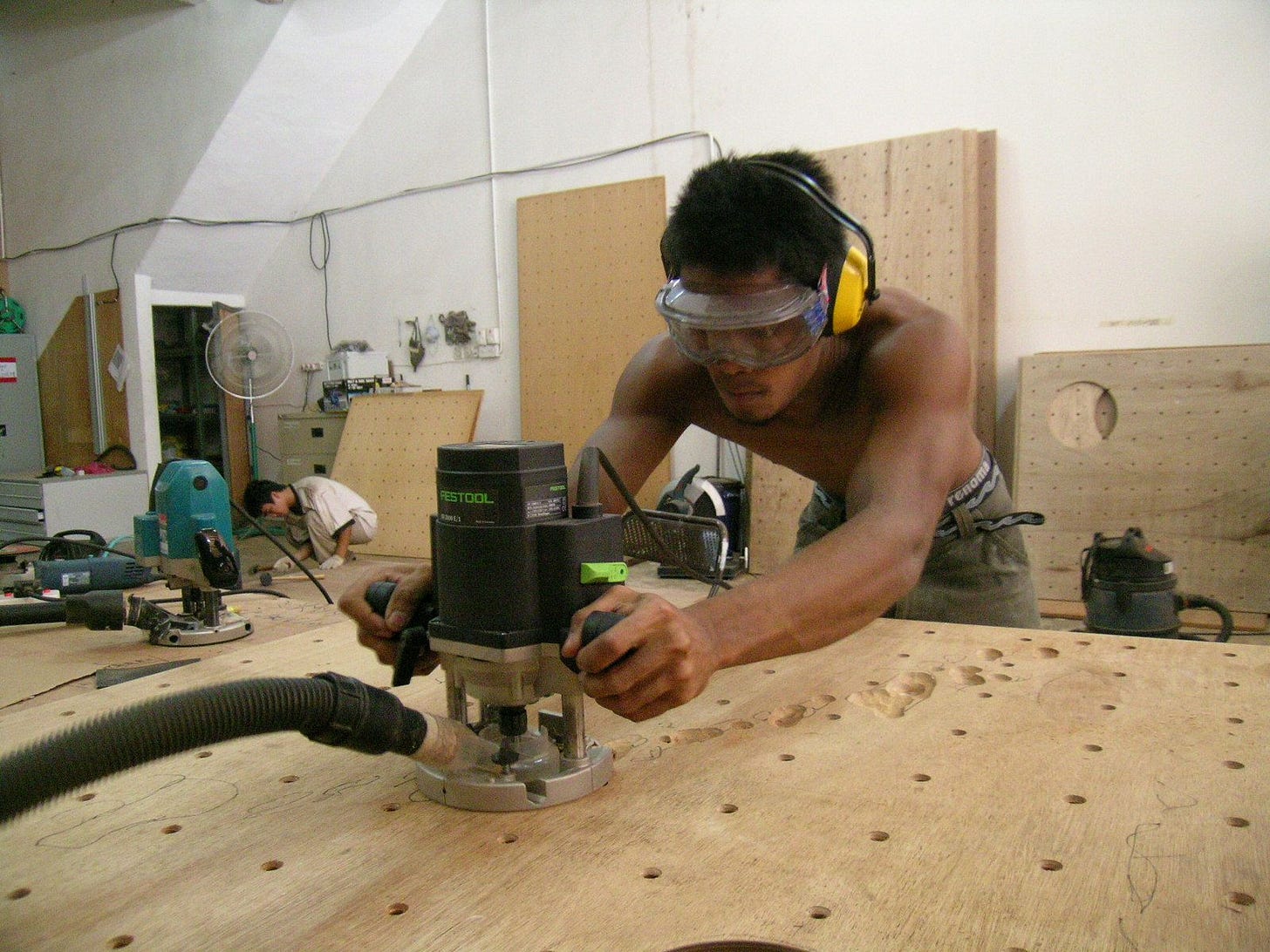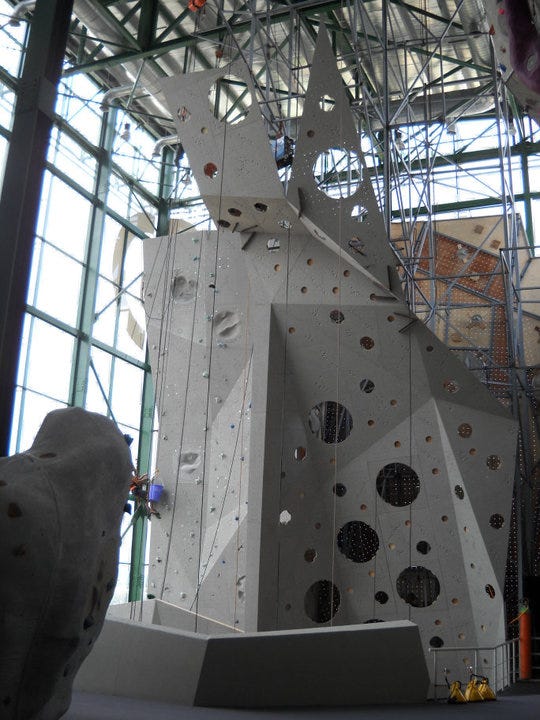Thirty years ago, climbing in Malaysia was very different from what we are familiar with today. No indoor gyms, fancy outdoor gear, competitions, or climbing grades. There were only a handful of climbers, and they congregate in the same few crags every weekend driven by a desire to adventure and explore the boundaries of this new sport. The climbing crags were surrounded by a slum - as the area was urbanizing, families of squatters and their wooden houses had mushroomed in scattered clearings around the walls. Damai Wall, now a full-fledged extreme park, had only four routes. Red Rock, one of the first established outdoor crags in the country, had only a handful more. Most could barely recall now who bolted which routes then but perhaps origin myths remain best as mysteries.
Aswadi Akmal Noor (otherwise known as Adi) started climbing in this setting when he was a teenager. He would spend evenings after school or weekends in the “best playground in the world”, learning to climb and to trust gears that were nowhere near as advanced as they are now. They were clunky, difficult to handle, and uncomfortable - belaying for instance was done with a figure-8 or a plate. Climbing shoes were a luxury, not the norm.
Back in the old days, Adi recounted, Yuan Lee (another OG Malaysian climber, also the founder of Nomad, a company that then built the first indoor gym in Malaysia) would drive all the way to Singapore to purchase climbing gear and sell it locally. She would then peddle them in the back of a Volkswagen at the outdoor crags - the earliest local imported climbing gear business was run out of someone’s car. At some point, Adi improvised and experimented with using “kasut penguin” (cheap loafers with a bit more rubber at the front of the sole) for better grip. After a few trials and many skeptical looks, he abandoned the project. But this marked the start of Adi’s entrepreneurial journey in the climbing industry.
Adi explored multiple freelance outdoor projects in his early career, but his defining achievements are the lasting contributions he made to the climbing community. In 1999, he was commissioned to build an indoor climbing wall for Summit Climbing Gym. During that time, he developed a close friendship with Patrick and Jeremy (founders of Camp5) at the crag and eventually joined their company Blocx to build the structure and walls for the gym at One Utama Shopping Center and Putrajaya Challenge Park. Even then, he would spend his free time maintaining and opening up new crags around Malaysia.
Adi’s personal journey mirrors his career - a less-trodden winding path that always led back to climbing and one he would not trade for anything else. This point is a significant one to him, as he tried to put it to me multiple times - climbing has taught him so much about life and, albeit slightly ironic for an extreme sport, extended him a new leash on life.
When we spoke in his office in the corner of a warehouse in Sungai Buloh, he pulled up some photos of his recent deep-soloing trip to Langkawi and urged me to visit. I explained that I could not swim very well and he quipped, “It’s fine, you don’t have to climb very high. Just stay low and have fun.” This, I think, was what I would always remember about my few brief interactions with Adi: soft-spoken and encouraging with a twinkle in his eye that betrays a constant thirst for adventure. At 185 meters, he towers over most and could have appeared as an intimidating figure but instead, he emanates a warm sense of solitude and quiet contentment. In the outdoors, Adi is a picture of pure bliss and calm, unperturbed by mosquitoes or the harsh sun. Once when a group of us was stuck seeking shelter from a sudden storm under the overhanging rocks at Nyamuk Wall, he just sat on a boulder and looked almost at home.
This was not how he always was, he explained. There was a period in his life when he pushed himself over his limit and became deeply unhappy.
During his time building walls for Camp5, he struggled with finding his source of tranquility. He poured himself into the project to a point of risking physical injury and found himself deeply unhappy managing so many stakeholders on such a large-scale project. Adi’s admiration for and gratitude to Patrick for taking the chance on him when he was relatively unknown was apparent - he pointed out repeatedly that he chose to invest so much of himself in the project. People who knew him agreed: Adi would give his all to his friends and the people he cares about.
The deliberate efforts to live life at his own pace, to take each new project as it comes (right now, he is also helping out a friend on a creative project to create tote bags out of melted plastic) has a huge influence on his climbing journey – or was it the other way round? It is hard to tell sometimes how much we shape our climbing journey and how much it has shaped us in return.
“People run through their lives these days as if it will not end. Climbing makes it very real for me - you can die if you’re not careful. It reminds me daily that I am mortal and that life is finite so do what means a lot to you.” Gravity, much like mortality, always wins.
And Adi chooses to truly live on his terms - his last big climbing project was Pledge (8A) in 2004 but he did not feel an urgent need to have a next climbing goal right away.
“Why the rush? It’s a marathon, not a sprint. Have fun, keep at it and the outcome will follow.”
To this motto, Adi has been steadfastly loyal in his approach to climbing and his mission of contributing to the climbing community (and by extension, his friends). He now runs a business resoling climbing shoes, born partly from his earlier experiences of not being able to afford proper shoes and his desire to help keep costs low for existing climbers and make the sport more accessible.
Does he miss the old days? “Sometimes. We do not have as big a mindset of exploration as in the West. We stay within our comfort zones quite a bit, so boundaries don’t get pushed.” Even then, he recognizes that we are seeing climbers with more diverse skills and strengths emerging and that is important for growing the sport.
Climbing skills and etiquette are like cultural traditions and myths, passed down from one generation to the next through oral lessons, observations and stories. Things occasionally get lost or misinterpreted. Modern innovations gradually change the landscape of the sport. Yet, bits of Adi’s footprint and handwork will still live on in the next generation of climbers - from the walls he had helped build in Camp5 to the outdoor crags that he cleared to pave the path for stronger outdoor climbers today. Climbers projecting Pear (7A, 5.11c/d) in Nyamuk today have Adi to thank for the infamous runout to the anchor. And the broader climbing community has him to thank for laying down the roots of the sport we love and will continue shaping.
Special thanks to Adi for generously sharing his story - follow Adi on Facebook (Adi Noor) or Instagram (@sweet.black22) for more climbing-related videos and adventures. You can also reach out to him if you need your shoes resoled.
Up next: A friend and I are working on a guide to one of the oldest crags in Batu Caves next. Leave your e-mail in the field below to get it directly to your inbox!









